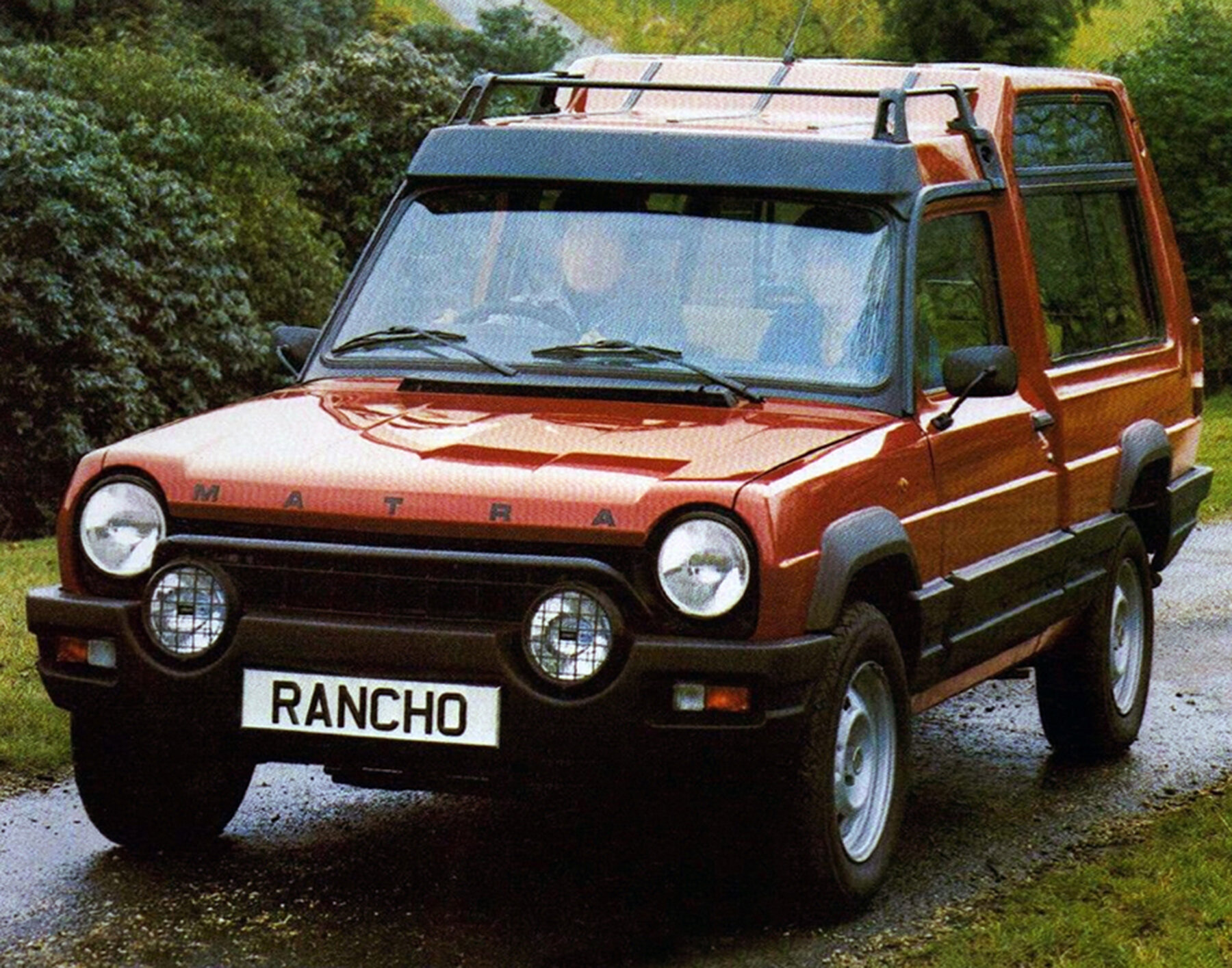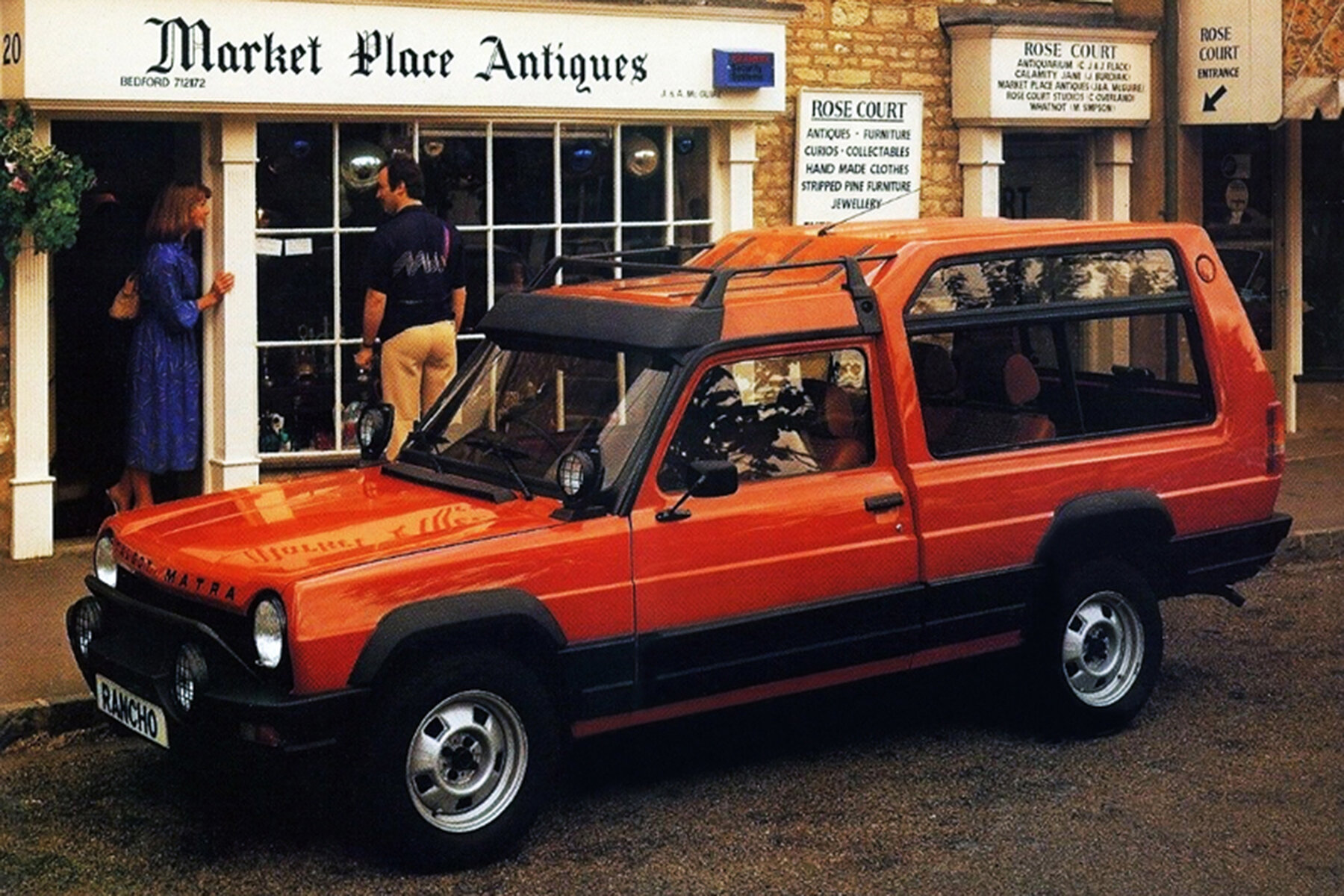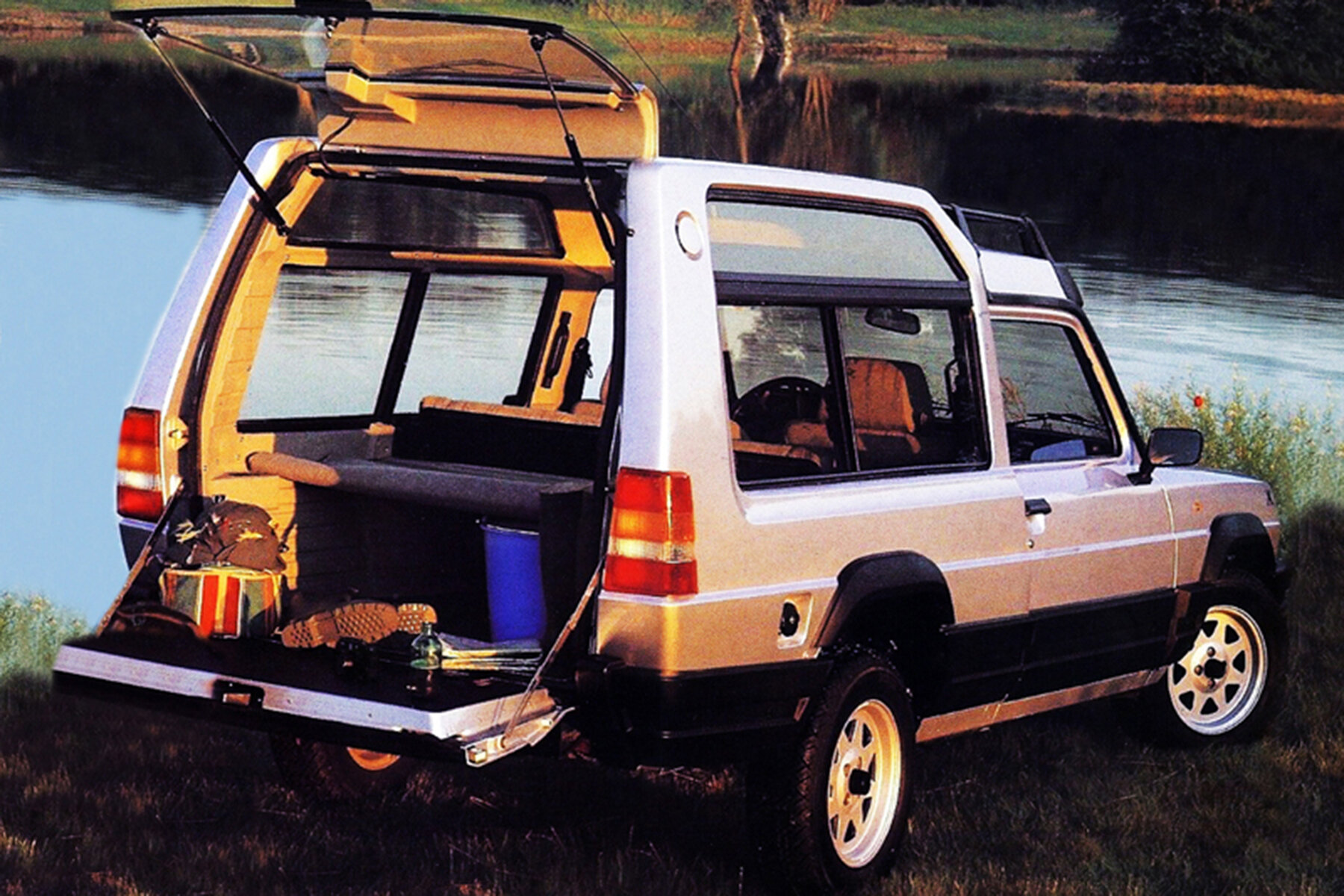Considering buying an example of this original soft-roader? The Talbot Matra-Rancho was years ahead of its time, but buying one is fraught with pitfalls. Our buying guides walks you through.

Despite its rough and tumble looks, the Rancho had limited off-road ability since it was front-wheel drive. But given that so many cars these days are just this, marketed as SUVs, and buyers love the combination of ruggedness and adventurousness, it would seem that the Matra Rancho was well ahead of its time.
Matra took the unlikely base of a Simca 1100 van and turned it into an exceedingly practical family car. It even offered a seven-seat option, predating the rush to MPVs that happened in the late-1980s. Launched originally as the Matra-Simca Rancho, it became the Talbot-Matra Rancho in 1980 when Simca’s parent Chrysler was taken over by Peugeot and revived the Talbot brand as a consequence.
The bolt-on rear structure gave huge visibility, with the rear seat raised to make it even easier for rear passengers to see out. The rear seat folded to increase an already generous luggage space.
Read more: Matra-Simca Rancho – forgotten hero
MATRA RANCHO BUYING GUIDE
BODYWORK
The glassfibre rear body structure suggests a resilience to rust, which is sadly lacking in reality. The rear section can be unbolted and underneath you’re likely to find a world of corrosion. If anything, the Rancho is even worse than other Simcas, as the modifications to create it resulted in even more rot traps than usual.
The key area to check is around where the rear trailing arms and torsion bars attach to the body. You can easily blow £500 getting this section brought back up to scratch and if things are really bad, it’s the death knell. Watch the sills too, as plates may cover poor repairs. Get underneath and check where they meet the floor, which also rots, as do A-posts and the bulkhead. Wings can corrode where the spotlights bolt on. They were shared with the 1100 but aren’t as easy or cheap to find as they once were. Trim can be hard to find and a lot of it is unique to the Rancho.

People knock the Rancho, but it sold well when new, and was seen in the smartest places
ENGINE
The clattering Simca engine is a touch unrefined, but hardy. Neglect can cause cooling system woes, such as silted, rusty radiators or even cracked cylinder heads if antifreeze levels have not been maintained. Engine parts are not hard to find as the 1442cc engine was used in many cars, including the Matra Bagheera sports car. The usual checks apply: watch for blue exhaust smoke suggesting excessive wear, and signs of head gasket failure such as creamy deposits under the oil filler cap. Also watch the temperature gauge on a test run and let the engine tickover for a while afterwards to ensure the cooling fan cuts in.
TRANSMISSION
Gearboxes are a weak point, the selector mechanism can fail and make finding the right cog very difficult. Synchromesh can wear too. A replacement gearbox shouldn’t be too hard to find. Driveshafts can also deteriorate – the raised suspension height puts them under greater strain. Listen out for knocks and clonks, especially when turning. Brakes are Alpine or Horizon so parts are plentiful. Aside from corrosion, the suspension system is robust with torsion bars all round. Worn dampers can make the ride bouncy.
INTERIOR
The bad news is that seat trim is bespoke to the Rancho and can degrade over time. The good? It’s replaceable. The Simca Owners’ Club does a lot of parts searching on the continent, so is always worth a try.
The electrics are simple and tend to be reliable – any failures are likely to be down to dirty connections or poor earths, but make sure the heater blower works, as replacements can be hard to find. Remember that the wing-mounted spotlights only operate with the ignition switched off!

SHOULD YOU BUY A MATRA RANCHO? THE CCFS VERDICT
If you can actually find one, classics don’t come much more practical. The quirky styling will either appeal or it won’t, but the base Simca 1100 is a great car, so handling is tidy and performance won’t disgrace. A strong following is building across Europe for the Rancho, so hopes of nipping over to France to buy a cheap one may be dashed. While not brisk, performance is very reasonable and the rarity and high stance mean they really stand out at shows.
Did anyone else have the Corgi toy when they were a child? That might be as close as you get these days.

Matra Rancho was based on a van, which shows when you open the split-level tailgate.
TALBOT MATRA RANCHO SPECS AND DETAILS
Production: 1977-1984
Engine capacity: 1442cc
Cylinders: 4-inline
Valvetrain: OHV, 8-valve
Maximum power: 80bhp@5600rpm
Maximum torque: 88lb ft@3000rpm
Maximum speed: 92mph
0-60mph: 15.0sec
Fuel economy: 25mpg
Transmission: Four-speed manual, front-wheel drive